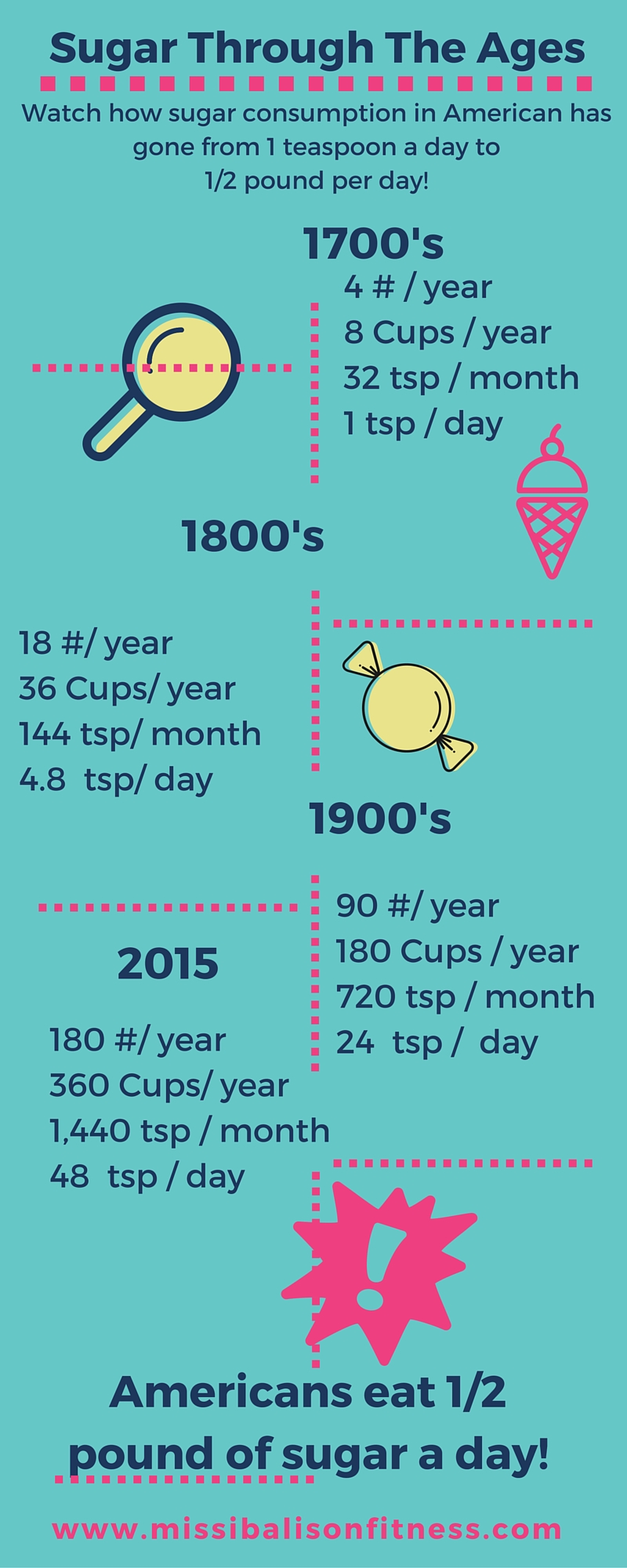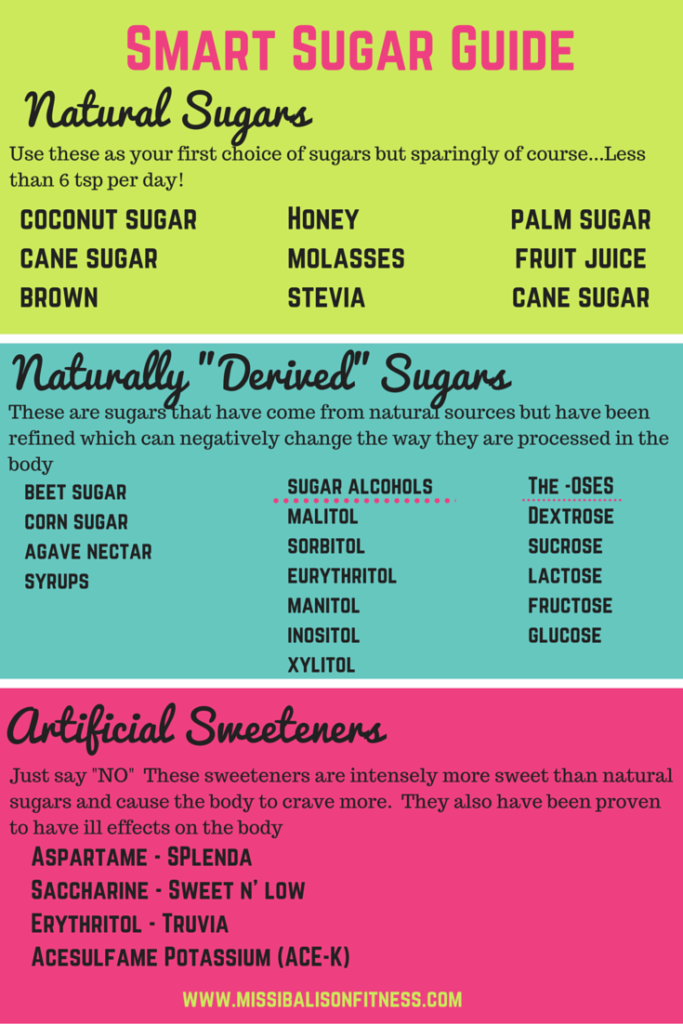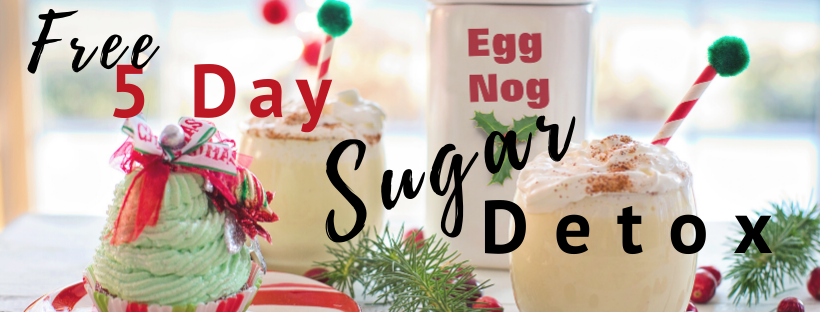Have you tried over and over to quit sugar?
I find that it can be really helpful to understand sugar for what it really is (which is not good) and what it really does in our body (which is not good either) …So, get ready for some eye opening statistics, facts and woes about sugar.
A friend once told me that in order to teach your dog who’s boss (you, hopefully) you should not allow your pet to sit on your lap or on your feet. When the dog is allowed to do this, they begin to believe that they own you! This could definitely make future bad behaviors a problem.
Now, I don’t know if that statement is absolutely true but she knows much more about dogs than I do so I’m sticking with it. The important part is that the conversation made me think about the fact that the same concept applies to sugar!
We often think that we make food choices of our own accord but in the case of sugar is that really true? We are going to take a look at how much sugar we eat in a day, sugars’ addictive properties, where sugar hides and how we can minimize it in our diet.
I find that it can be really helpful to understand sugar for what it really is (which is not good) and what it really does in our body (which is not good either) …So, get ready for some eye opening statistics, facts and woes about sugar.
First of all lets take a look at how our consumption of sugar has increased over the years. This is pretty staggering:

We went from eating a mere 1 teaspoon of sugar a day ( which most likely came from the sugars found in seasonally available fruits) to ingesting 1/2 POUND of sugar a day! That translates to a complete 1 cup of sugar! The American Heart Association recommends that we keep sugar consumption to 6 teaspoons of sugar daily…We are eating 24 teaspoons of sugar DAILY!
To be honest, I’m kind of grossed out!
Sugar has such addictive qualities that it may actually have more power over our own choices than we do! Sugar is a hijacker in that it takes over the brain.
How many times have you settled down to have a nice little bowl of ice cream only to quickly get the urge to indulge in another cup? After that second cup you begin to feel a little bit gross… A gut ache sprinkled with a little guilt. When you sat down to eat that small bowl of ice cream you really did intend to have just a small taste but something inspired/drove you to go for more. That was sugars sneaky side getting a hold of your brain.
This is how it works:
When we eat sugar we stimulate the reward centers of the brain. This is just like that warm fuzzy feeling you get when you eat your grandmas homemade cookies. A little bit can be O.K but over-activating this reward system can kick start a series of unwanted events. Unfortunately in the case of sugar, the reward system can cause loss of control, intense cravings and an increased need for sugar.
Dopamine is a chemical in the brain that lights up these reward centers. It is our “feel-good” brain chemical. When the brain feels good about something it wants to do it again and again. Certain areas of the brain contain dense clusters of dopamine receptors.
The brain is cued in to recognize new and different tastes so when a food becomes boring Dopamine tends to level off. In the case of sugar eaten all the time, dopamine does not level off. Eating lots of sugar will continue to reward the brain. Soon, you need more and more of it.
When you consider that there are over 60 different names for sugar it is no surprise that is found hidden in many of our commonly eaten foods where we would not expect to find it. It is also no surprise that we are addicted to it. It is everywhere and our brain gets repeated “hits” of it all day long if we are not careful.
So let’s identify some of the forms of sugar that we see all too often. Identifying them will put you one step closer to removing them , or at least reducing them from your diet.
The chart below places the various types of sugar into 3 categories

Natural sugars are just that, natural. They grew out of the ground and are your best go to sources for sweetness. Of course, you will want to keep even these natural sugars to a minimum (less than 6 tsps per day) . My favorite is local, raw honey because it has immune system boosting qualities and can support your system during allergy season.
Stevia is a no-calorie, all-natural sweetener that comes from the leaf of a flowering plant. Just make sure that your use stevia in it’s most natural form. Green leaf stevia is the source you want to use. The white, granulated forms of stevia have been highly refined and processed and have lost their good qualities
Naturally “Derived” sugars are sugars that once grew in a natural form but have been highly processed and have lost any benefits. These should be used sparingly. Agave nectar is one that was originally touted as a great “natural” sugar alternative. Agave syrup is in fact derived from a plant but has been very highly processed and often has high fructose corn syrup added to it. Sugar alcohols fall into this category. They are naturally occurring sugar compounds but have been mixed with high intensity artificial sweeteners. They are used as thickeners in many foods as well as to hide unpleasant flavors of the artificial sweeteners that they are combined with (go figure). While sugar alcohols do not affect the blood sugar as much as other sugars, they do not digested fully in the gut and cause gas, bloating and intestinal upset in many people. In fact, did you know that the “blueberry” bits in your muffins and cereals are not really blueberries at all? They are made with propylene glycol, sugar alcohols, artificial colors and partially hydrogenated oils. Oh, and did I mention the propylene glycol is used to winterize your RV and defrost windshields. Ummmm, yeah. Moving on…
For our final category, artificial sweeteners, you may want to sit down…
Artificial sweeteners are anywhere from 200-600,000 times sweeter than plain old sugar. Again, it is no wonder we are quickly addicted to sugars affects. These faux sugars can increase cravings for more sugar, cause headaches, mood swings, memory loss and fat storage. They are often found in sugar and fat free foods and sodas. Artificial sweeteners have been known to cause cancer (particularly aspartame) and are commonly known neurotoxins. I am regularly asked about whether I would recommend diet or regular soda. I would steer people toward regular soda just to keep them from consuming these health destroying chemicals called artificial sweeteners.
Would you like to know about the negative effects of sugar on the body? It is a very motivating way to help one kick the habit so let’s take a look:
Sugar increases the incidence of:
Diabetes Obesity Alzheimers
Fatty liver disease Hypoglycemia Tooth decay
Heart Disease Acidic stomach Kidney damage
Crankiness Depression Drowsiness and inactivity
Food allergies Weight gain Pancreas damage
Eczema Hormonal imbalance High blood pressure
Hyperactivity Several cancers Free radical damage
Mineral deficiencies
Sugar decreases:
Good cholesterol Absorption of calcium and magnesium
Immune system Hunger hormone
Collagen ( Read: increases saggy skin)
Wow! That’s a lot of bad stuff!
If that is not motivating enough it can always help to take a look at the amounts of sugar found in items that pass across our plates or that join us on road trips. Here are a few eye openers:
- One can of Coke equals about 10 teaspoons of sugar. That’s more sugar than two frosted Pop Tarts with a Twinkie on top!
- Americans consume about 180 pounds of sugar every year. That is the equivalent of about 2,000,000 Skittles (Yes! That is 2 million!)
- Sugar sucks your energy – science shows it takes about 30 minutes or less to go from a sugar rush to a sugar crash. This sugar spike, then drop sets you up to want mere sugar and the vicious cycle continues
- The typical breakfast of cereal, skim milk, toast and a glass of juice can easily carry 39 grams of sugar…That’s over 9 teaspoons…for breakfast!
- One leading brand of yogurt contains 7 teaspoons (29 grams) of sugar per serving.
- a breakfast bar made with “real fruit” and “whole grains” lists 15 grams of sugar
O.K. Now that you’re highly motivated, let’s take a look at what you can do to limit and even eliminate sugar. Reducing sugar can be challenging at first but just trust that your taste buds will adjust. Super-sweet foods like ice cream and candy will start to taste too sweet. You’ll begin to notice the natural sweetness in fruits and vegetables—and yep, they’ll taste better, too.
Here are some tips:
- Wean off 1-2 weeks at a time. For the first week drop your sugar dose to 1x a day, in another week cut back to 3x a week and then less and less.
- Substitute beverages such as Zevia or La Croix water and Kombucha to help you wean off of soda.
- Track the calories you have been consuming from soda…eye-opening and motivating
- Think about the benefits you will gain when you have control over sugar…no joint pain, weight loss, less inflammation…
- Eat and sleep as well as you can when attempting to give up sugar
- Plan “pre-emptive” strikes. If you know you have a weak time of day or there are certain sugar triggers at your office, plan to have healthy snacks available or plan to take another route through the office that does not pass by the donut table
If you need more help kicking the sugar habit to the curb, my 5 Day Sugar Detox will teach you what you need to know. You’ll receive a downloadable e-book about sugar that includes tips to conquer cravings and enhance will power as well as 5 daily e-mails to guide you through the process. Don’t do it alone…Grab the 5 Day Sugar Detox HERE

